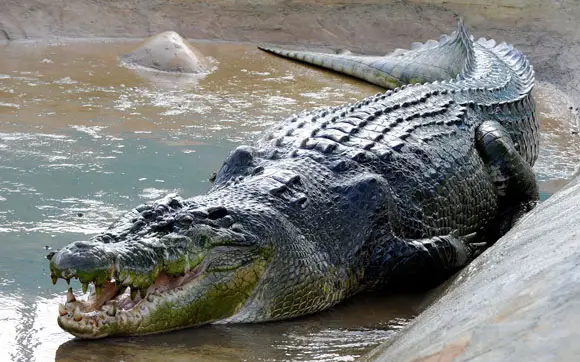- Home >
- Our Actions >
- Ambassador report
2
Comments
The Philippines: A Crucial Site for Wildlife Preservation [March Theme Report] |
|---|
|
by Guela Francine Ecle | 31-03-2023 17:49
|
|
The Philippines is a country blessed with an abundance of biodiversity. The archipelago, which is made up of over 7,000 islands, is home to more than 52,177 known species, including over 700 threatened species. This makes the Philippines one of the most important conservation sites in the world. In 2004, the Philippine government created a national list of threatened animals, which includes 42 land mammal species, 127 bird species, 24 reptile species, and 14 amphibian species. These species are at risk of extinction due to various factors such as habitat loss, poaching, and climate change. One of the main threats to Philippine wildlife is habitat destruction. The country's forests are being cleared at an alarming rate to make way for infrastructure development, agriculture, and mining. This has led to a significant decline in the population of many species, especially those that are endemic to the Philippines. For instance, the Philippine eagle, the country's national bird and one of the largest eagles in the world, is critically endangered due to the loss of its habitat. The eagle's population has declined to around 400 pairs in the wild, making it one of the rarest birds on the planet. Other endangered species include the Tamaraw, a small buffalo that is endemic to Mindoro Island, and the Philippine crocodile, a freshwater crocodile that is found only in the Philippines.
Source: Why We Love Birds
Source: Guinness World Records
Another threat to Philippine wildlife is poaching. The illegal trade of wildlife for food, medicine, and the pet trade is a lucrative business in the Philippines. Many species, such as the Palawan pangolin, the world's most trafficked mammal, are hunted and sold on the black market. The pangolin's scales are believed to have medicinal properties, while its meat is considered a delicacy. Poaching also threatens the survival of many bird species, such as the Philippine cockatoo and the blue-naped parrot. Climate change is also a significant threat to Philippine wildlife. The country is highly vulnerable to the impacts of climate change, such as rising temperatures, changing rainfall patterns, and more frequent extreme weather events. These changes can affect the distribution and abundance of many species, especially those that are already endangered. Despite these challenges, there are several conservation efforts underway to protect Philippine wildlife. The Philippine government has enacted laws and policies to protect endangered species and their habitats. The Wildlife Act of 2001, for instance, prohibits the hunting, killing, and trading of endangered species. The Philippine Biodiversity Strategy and Action Plan (PBSAP) provides a framework for conserving the country's biodiversity and ensuring the sustainable use of its natural resources. Non-governmental organizations (NGOs) are also working to protect Philippine wildlife. The Philippine Eagle Foundation, for example, is a non-profit organization that aims to conserve the Philippine eagle and its habitat through research, education, and conservation programs. The foundation has successfully bred and released several eagles back into the wild, and it continues to work with local communities to promote sustainable development. Another NGO, the Haribon Foundation for the Conservation of Natural Resources, is working to protect Philippine forests and their biodiversity. The foundation conducts environmental education programs, reforestation projects, and biodiversity surveys to raise awareness about the importance of conservation and sustainable development. Education and awareness-raising are also critical in protecting Philippine wildlife. Many Filipinos are not aware of the importance of their country's biodiversity and the threats facing it. By educating people about the value of wildlife and the need to protect it, we can foster a culture of conservation and ensure the survival of threatened species. In conclusion, the Philippines is home to over 700 threatened species, making it one of the world's most important conservation sites. Habitat loss, poaching, and climate change are the main threats to Philippine wildlife, but there are several conservation efforts underway to protect it. By enacting laws and policies, working with NGOs, and raising awareness, we can ensure the survival of these species and preserve the country's rich biodiversity for generations to come.  Source: Foundation for the Philippine Environment References: https://fpe.ph/biodiversity.html/view/the-lay-of-the-land-ecosystem-diversity-in-the-philippines https://edgedavao.net/feature/2017/12/18/environment-saving-philippine-eagle-extinction-2/ |
|
|












 Previous : {March Thematic Report} Curren...
Previous : {March Thematic Report} Curren...









2 Comments
Hello Guela! This is your mentor James!
First of all, my apologies for the late comment!
I see that you have listed the endangered animal species that can only be found in the Philippines! It is such a sorrow to hear that the national bird of a nation is critically endangered due to loss of habitat. I've heard of the Pangolin, one of the most trafficked anteater in the planet. Illegal poaching and trading of wild animals should be checked by the local government and environmental organizations. I mean, what have they done wrong to be hunted down?
Thanks for the meaningful report! Looking forward to reading your next one!
Posted 05-05-2023 15:44
Hello Guela! This is your mentor Yewon.
I apologize for the late comment.
Your report was so interesting and informative with some statistics and examples! Especially, I agree with your point of view that habitat destruction is one of the biggest threats to wildlife. As you mentioned in your report, there can be lots of ways to solve this problem, so I hope wildlife would be preserved well!!
Thank you for your hard work!
Posted 27-04-2023 02:13